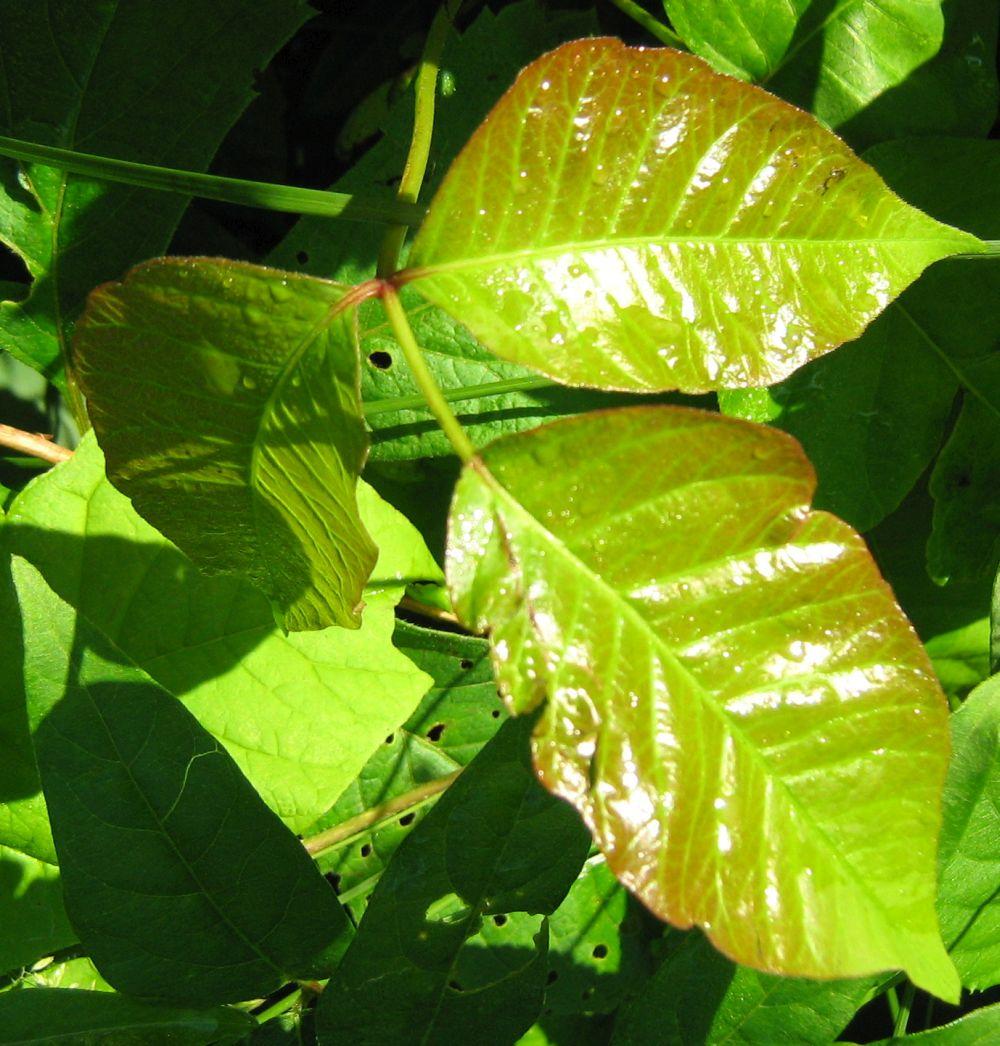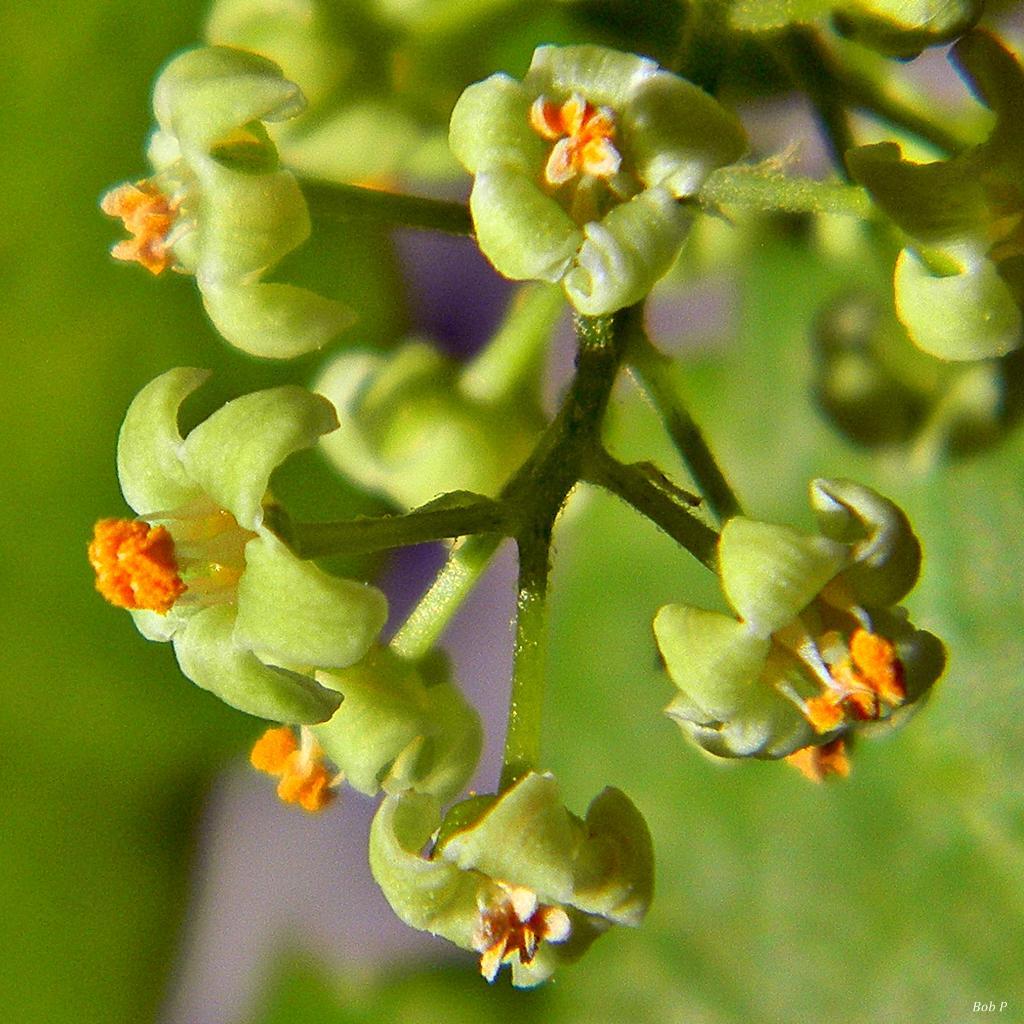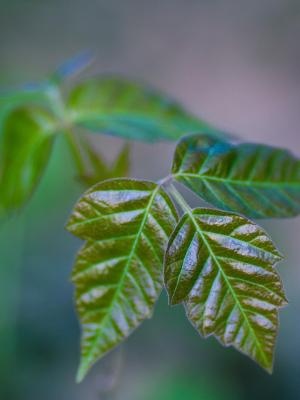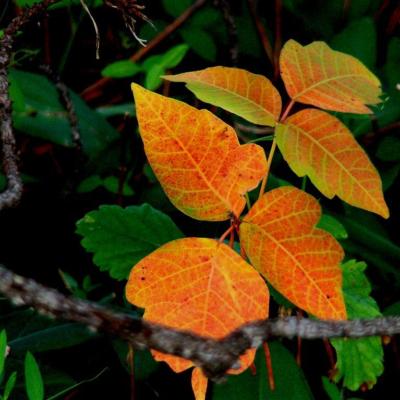Nature's Primercoat
- Tags:
- Something Wild

Don't touch! Poison ivy leaves glisten with "urushiol" an oily chemical compound that causes the signature rash from contact. (Photo: Karla Salathe)
Every week here at Something Wild we encourage you to go outside. It's easy to find the wild in New Hampshire, be it a walk on the beach, a hike in the woods or a quiet crepuscular kayak ride. However there are things you need to be mindful of when you're out. We've heard a lot about ticks but not so much about poison ivy.
You've probably seen or come into contact with poison ivy at some point; the three waxy leaves with serrated edges. You probably also know you should avoid it. Don't touch touch the vine, don't touch the root. You can get a rash from any part of the plant.
What causes the rash?
Poison ivy secretes an oil called "urushiol" and most people are allergic to that oil and develop that signature rash within a few hours of contact. Not all animals are sensitive to urushiol. Goats and deer eat the leaves, rabbits eat the bark, and bees harvest the flower to make a bitter honey.

Birds love the poison ivy berry, which is high in lipids, providing much needed fat calories for fall migration. But if a person ate one of the berries, that person would die. So why is it so dangerous to humans, but not a problem for most other species? We don't know. And we don't know what purpose the urushiol serves the plant. What we do know is that poison ivy is an incredibly resourceful plant.
Where does it grow?
Poison ivy thrives in disturbed landscapes. You can see it near beaches, which are constantly getting beaten by coastal storms. You'll see it along road sides or abandoned lots, which are disturbed by other forces. Bulldozers and excavators create huge swaths of raw land and poison ivy is the master of colonizing these edges and margins.

Poison ivy is kind of like nature's primer coat. When you build something - a car, a wall, a boat - you can't just leave it to weather. The first thing you do is prime it - build a foundation for successive coats. So if you have a plot of earth, a sand pit for instance, poison ivy will be one of the first things you'll see growing, priming it with vegetation. And because it's a vine, it can take advantage of empty space, rooting in one place and then covering a parking lot, or spanning a chain link fence, or the broadside of a barn. As generations of vines die off, they stabilize shifting sand, allowing other larger plants to take root and eventually turn that empty lot into a forest. Poison ivy needs sun - a lot of it - so when larger plants take root in the lot, they slowly shade out the pernicious vine.

How do I get rid of the rash?
Once you have a rash, you just have to ride it out but washing off the urushiol as quickly as possible is the best way to keep it from spreading. Check out this video for a really solid demonstration of how to effectively remove the oil from your skin!
